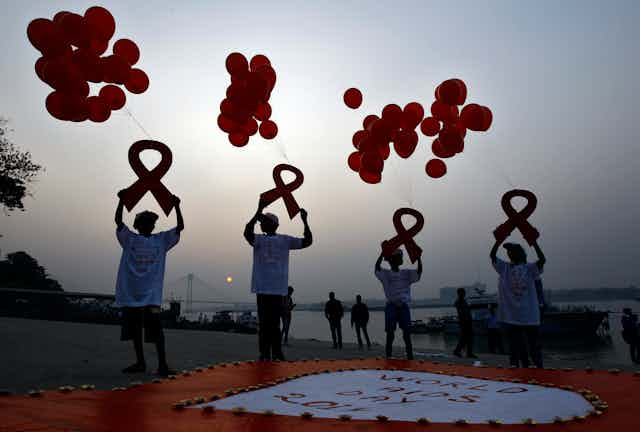Young women bear a disproportionate burden of HIV in sub-Saharan Africa – and South Africa has a particular challenge. In some parts of the country more than 36% of people are HIV positive.
Three studies conducted by the Centre for the AIDS Programme of Research in South Africa (Caprisa) in rural and urban sub-districts of the KwaZulu-Natal province provide new insights into the engine that drives HIV transmission in the country. They also reveal a new way to tackle the problem of HIV. Caprisa’s director Professor Salim Abdool-Karim explains the latest findings.
What did you discover about the patterns of HIV transmission?
Our first study focused on interrogating the age-disparate sexual relationships between older men and younger women. This would help us better understand who was infecting young girls within the community.
The study used gene sequencing on HIV positive people within the community to get a clearer picture of how many people had the same or similar versions of the virus. It was found that in about a third of the sample, they could link people to a cluster where there was the same or similar virus to others in that community.
This data showed that adolescent girls and young women were contracting HIV from their partners, who were on average eight years older. These older men were simultaneously in sexual relationships with women – of similar ages to the men – who have HIV prevalence rates exceeding 60%. While the fact that young women are engaged in sexual relationships with older men is not new information, this study provides insight into how HIV is transmitted within this community.
This is where the “cycle of transmission” became apparent. Older women, who are HIV positive, are in relationships with men the same age as themselves. However these men, who are mostly unaware of their HIV status, are then also sleeping with younger women. The younger women will then contract HIV and when they grow up they will become the source of infection for men in the same age group as them. This perpetuates the cycle.
What additional factors account for the high infection rates in adolescent girls?
In addition to this “cycle of transmission”, our other two studies revealed biological factors that put young women at high risk of HIV infection. We did this by analysing vaginal bacteria. The second study looked at the genetic codes of vaginal bacteria of 119 South African women.
It was found that women who had an abundance of a naturally present bacterium (Prevotella bivia) had a 13-fold increased risk of acquiring HIV. Overgrowth of the bacteria resulted in a protein called lipopolysaccaride being released which increased genital inflammation 20-fold. This genital inflammation increases vulnerability to HIV infection and places young women with excess Prevotella bivia at greater risk of becoming HIV positive.
The third study also looked at genital bacteria in women. Here we wanted to gain a better understanding of the efficacy of tenofovir gel being used as a pre-exposure prophylaxis (PrEP).
It showed that tenofovir gel was effective in three out of five women who had a dominant presence of a bacteria called lactobacillus. Lactobacillus bacteria is naturally present in the vagina and helps maintain an acidic pH. This is beneficial as it maintains a “healthy” vaginal environment.
Women with low levels of this bacteria had increased levels of Gardnerella vaginalis – a bad bacteria naturally which is naturally present in the vagina. This poses a problem to the efficacy of tenofovir, since Gardnerella absorbs the tenofovir drug. This reduces the amount of tenofovir present and inhibits the efficacy of PrEP.
The results of these studies and the new information they provide enable us to re-examine HIV prevention interventions to break the cycle of transmission. The presence of Prevotella and Gardnerella can both easily be tested for. There is a readily available antibiotic treatment should women require it.
These new targeted interventions can have a significant impact on reducing the spread HIV and reducing the risk young women face of becoming HIV positive in South Africa.
How do you break this transmission?
Our studies show that there are a complex set of social and behavioural factors that have an impact on HIV transmission. Treatment is key but you need additional measures. Circumcision in young men will reduce their risk of contracting HIV but there may still be some transmission. Young girls also need to be protected with pre-exposure prophylaxis.
In total, test and treat initiatives with circumcision and PrEPs are a combination that can break the patterns of HIV transmission. But the critical issue is that we cannot adopt an ostrich approach to older men sleeping with younger women. We need a new set of community norms.
These studies can also be applied to Eastern Africa and the rest of southern Africa, where 70% of the HIV population lives, to see if there are similar results. This would inform policies to tackle the problem of HIV transmission.

